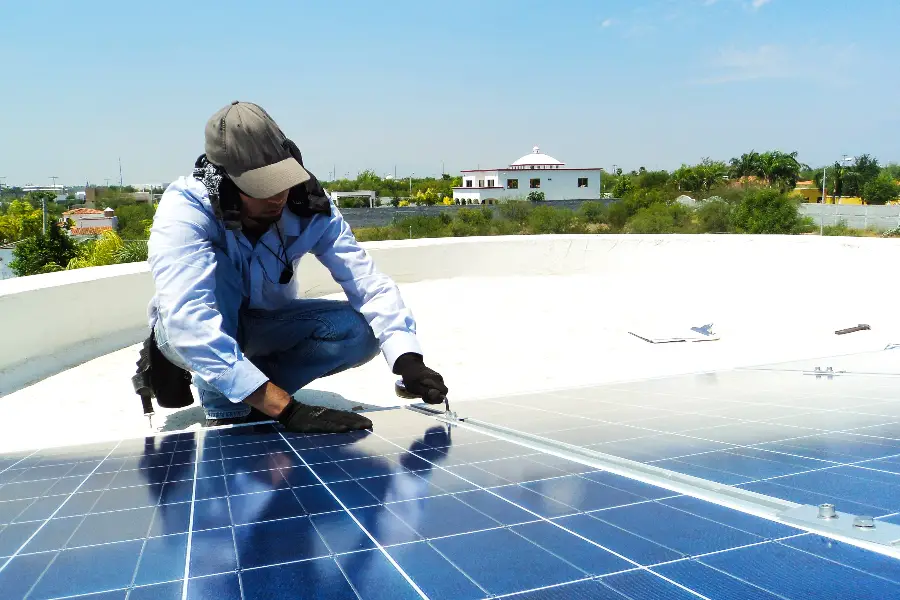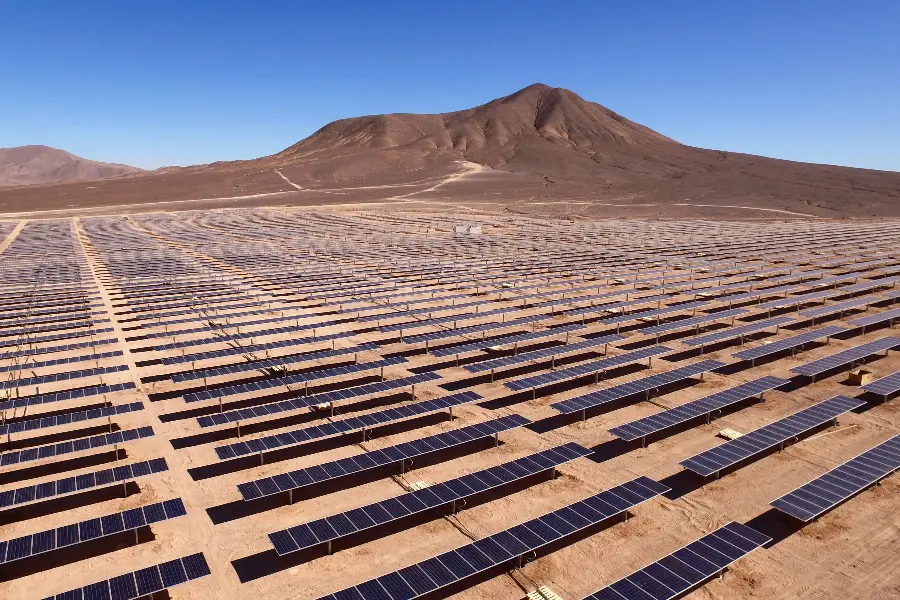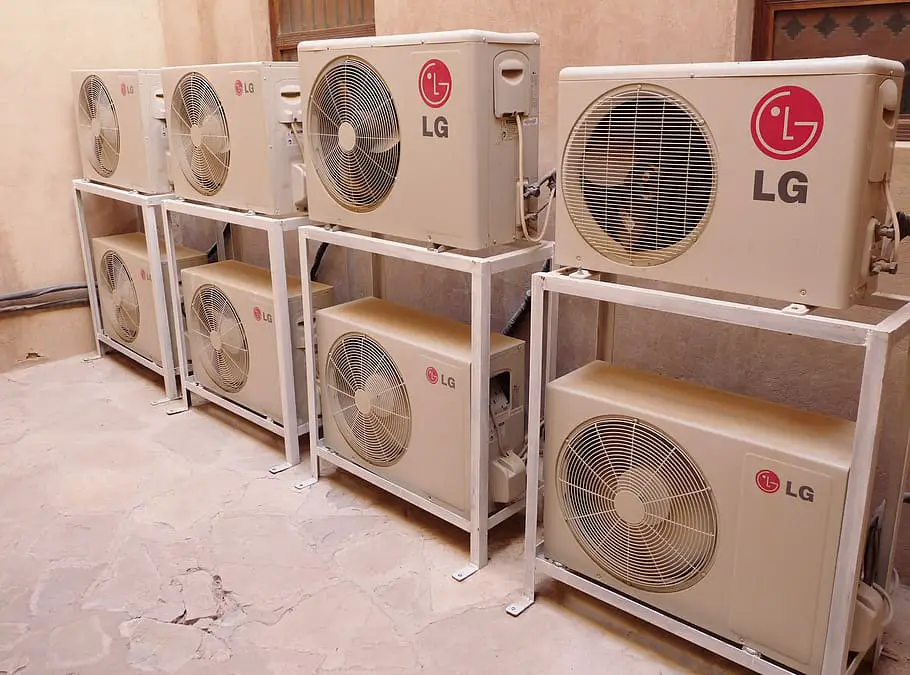
Explore the impact of solar panels on climate change in our latest blog post. Do Solar Panels Help Climate Change? Find out now!
Ever looked up at the sun and wondered about the power it holds? Imagine harnessing that energy to power our homes, our cities, and our world.
Now, let’s take it a step further. Do Solar Panels Help Climate Change?
It’s a question that’s been buzzing around lately. In this post, we’re diving deep into the world of solar energy, exploring how these shiny panels could be a game-changer in our fight against climate change.
So, grab a cup of coffee and join us on this enlightening journey!
Do Solar Panels Help Climate Change?
Are you curious about the role of technology in our battle against climate change?
Specifically, do solar panels help climate change? It’s a hot topic and one we’re excited to delve into.
In this post, we’ll be unpacking the science behind solar energy, its impact on our environment, and how it contributes to the fight against climate change.
We’ll also look at the benefits and challenges of solar energy, share some inspiring case studies, and even answer some of your burning questions.
So, sit back, relax, and let’s embark on this journey of discovery together!
Brief Overview of Solar Panels and Climate Change
Solar panels, those sleek, shiny fixtures you see on rooftops, are more than just a modern accessory.
They’re a beacon of hope in our fight against climate change. But how you ask?
Well, these panels are designed to capture the sun’s energy and convert it into electricity.
This process is clean, renewable, and most importantly, it doesn’t release harmful greenhouse gases.
So, every time you switch on a light powered by a solar panel, you’re choosing a greener, more sustainable future. Pretty cool, right?
Importance of the Topic
Now, you might be wondering, why all this fuss about solar panels and climate change.
Well, the answer is simple yet profound. Climate change is one of the most pressing issues of our time.
Rising temperatures, melting ice caps, extreme weather events, we’re all witnessing the effects.
And while it’s a problem of epic proportions, solutions can start right at our homes, with choices like opting for solar energy.
By understanding and discussing topics like these, we’re taking a step towards awareness, action, and hopefully, a better future.
So, let’s keep this conversation going, shall we?
Understanding Solar Energy
Ready to soak up some knowledge about solar energy? Great! Solar energy is like that friend who’s always bright and full of energy.
It’s a form of renewable energy that comes directly from the sun, our very own star.
It’s abundant, it’s clean, and it’s one of the key players in our transition to a more sustainable future.
But how do we tap into this solar power? That’s where solar panels come into play.
So, let’s dive in and get a better understanding of this radiant resource!
What is Solar Energy?
Solar energy, in simple terms, is energy from the sun. But let’s not underestimate it. It’s a powerhouse!
Every day, the sun showers our planet with an incredible amount of energy.
In fact, in just one hour, the earth receives more energy from the sun than we humans use in an entire year.
Now, that’s what you call a power-packed performance! This energy is clean, renewable, and absolutely free.
It’s like nature’s gift to us, a gift that could help us solve many of our energy and environmental challenges.
How Do Solar Panels Work?
Now, onto the magic of solar panels. How do they take sunlight and turn it into electricity?
It’s all thanks to a nifty bit of technology called photovoltaic cells, or PV cells.
These cells are made of semiconductor materials, like silicon, which absorb sunlight.
When the sunlight hits these cells, it knocks electrons loose from their atoms.
As these electrons flow through the cell, they generate electricity. It’s like a mini power station on your rooftop!
And the best part? The only fuel they need is sunlight. So, as long as the sun is shining, we’ve got a source of clean, green energy.
The Impact of Solar Energy on Climate Change
Ever wondered if the sun could be our superhero in the fight against climate change?
Well, with solar energy, it just might be! Climate change is a complex issue, and it’s going to take a variety of solutions to tackle it.
One of those solutions is shining down on us every day, solar energy.
But how exactly does harnessing the power of the sun impact our climate?
Let’s shed some light on this fascinating topic and explore the role of solar energy in our global climate story.
How Solar Energy Reduces Greenhouse Gas Emissions
Let’s start with the basics. Traditional energy sources, like coal and natural gas, release greenhouse gases when they’re burned for electricity.
These gases trap heat in our atmosphere, leading to a rise in global temperatures, aka climate change.
Now, here’s where solar energy shines. When we generate electricity from solar panels, there’s no burning involved, and hence, no emissions.
It’s like a clean energy loop. Sunlight powers the panels, the panels generate electricity, and the only byproduct is more sunlight.
So, every kilowatt-hour of solar-produced electricity reduces greenhouse gas emissions that would have been produced if that electricity had come from burning fossil fuels.
The Role of Solar Energy in Mitigating Climate Change
So, we’ve established that solar energy reduces greenhouse gas emissions.
But what does this mean in the grand scheme of things?
Well, it means that solar energy is a key player in our fight against climate change.
By shifting our energy systems from fossil fuels to renewable sources like solar, we can significantly reduce our carbon footprint.
And it’s not just about the big picture. On a smaller scale, every household or business that chooses solar is contributing to this change.
It’s like casting a vote for a cleaner, healthier planet. And as more and more people ‘vote’ for solar, we move closer to a future where we can keep climate change in check.
The Environmental Benefits of Solar Energy
Did you know that solar energy is like a friend who always brings gifts?
Yes, besides its role in combating climate change, solar energy has a whole array of environmental benefits up its sleeve.
From conserving water to reducing pollution, solar energy is a true environmental champion.
So, let’s dive in and unwrap these gifts, one by one, and see how solar energy is not just lighting up our homes, but also helping to keep our planet healthy and vibrant.
Reduction in Water Usage
Water is a precious resource, and conserving it is crucial for our planet’s health.
Here’s where solar energy comes into play. Unlike traditional power plants that require vast amounts of water for cooling, solar panels use absolutely no water to generate electricity.
It’s a win-win situation – we get the power we need, and our water resources remain untouched.
So, by choosing solar, we’re not just saving energy; we’re also saving water.
Decrease in Air and Water Pollution
When we burn fossil fuels for energy, they release harmful pollutants into our air and water.
These pollutants can cause a range of health issues and damage our ecosystems.
Solar panels, on the other hand, generate electricity without any pollution.
No harmful emissions, no polluted waterways, just clean, green energy.
So, by switching to solar, we’re not just keeping our lights on; we’re also keeping our air and water clean.
Conservation of Resources
Our planet’s resources are finite, and we need to use them wisely. Solar energy helps us do just that.
The sun, unlike fossil fuels, is a renewable resource. It’s not going to run out anytime soon (at least for another 5 billion years, give or take!).
By harnessing solar energy, we’re reducing our dependence on finite resources and making the most of what nature has to offer.
Plus, solar panels can be recycled at the end of their life, further conserving resources.
So, solar energy isn’t just a smart choice for us; it’s a smart choice for our planet.
The Challenges and Limitations of Solar Energy
While solar energy has a lot of shining qualities, it’s not without its clouds.
Like any technology, it comes with its own set of challenges and limitations. But don’t worry, acknowledging these hurdles doesn’t dim the potential of solar energy.
In fact, it’s through understanding these challenges that we can find innovative solutions and continue to improve this amazing technology.
So, let’s take a balanced look at solar energy and explore some of the obstacles it faces on the path to a sustainable future.
Energy Storage and Intermittency Issues
One of the challenges with solar energy is that the sun doesn’t shine all the time.
When it’s cloudy or at night, solar panels can’t produce electricity. This is what we call the intermittency issue.
Now, you might be thinking, Well, that’s a bit of a problem, isn’t it? And you’d be right.
But don’t worry, we have a solution called energy storage. By storing the electricity produced during the day, we can use it when the sun isn’t shining.
However, energy storage technologies, like batteries, are still evolving and can be quite expensive.
But with ongoing research and advancements, we’re making strides in overcoming this challenge.
Environmental Impact of Solar Panel Production and Disposal
While solar panels produce clean, green energy, the production of the panels themselves does have an environmental impact.
The process involves mining raw materials and manufacturing the panels, which require energy and can result in emissions.
Additionally, at the end of their life, solar panels need to be disposed of properly to avoid environmental harm.
The good news is, many parts of a solar panel can be recycled, and the solar industry is working on ways to make the production process even more sustainable.
So, while there are challenges, there are also solutions and continuous improvements being made.
Case Studies of Solar Energy Impact
Seeing is believing, right? Sometimes, the best way to understand the impact of solar energy is to see it in action.
Across the globe, solar power is making a difference, from small rural communities to bustling cities.
In this section, we’re going to take a journey around the world, exploring some inspiring case studies that highlight the impact of solar energy.
So, buckle up and get ready for a trip that’s sure to leave you feeling hopeful about our sustainable future!
Examples of Regions/Countries Where Solar Energy Has Made a Significant Impact on Reducing Carbon Footprint
Let’s start our journey in Germany, a country that’s been a pioneer in renewable energy for years.
In 2020, renewable energy sources, led by solar and wind, covered more than 50% of the country’s electricity consumption for the first time.
This shift towards renewables has significantly reduced Germany’s carbon footprint and set a powerful example for the rest of the world.
Next, let’s head over to China, the world’s leading producer of solar panels.
In 2020, China’s solar power generation increased by 22%, helping the country reduce its reliance on coal and lower its greenhouse gas emissions.
Finally, let’s visit the sunny state of California in the USA. California has more solar power installed than any other U.S. state and has set ambitious goals for renewable energy.
In 2020, 34.2% of California’s power came from solar, helping the state reduce its carbon emissions and combat climate change.
These examples show that solar energy isn’t just a theoretical solution to climate change – it’s a practical one that’s already making a difference around the world.
The Future of Solar Energy in Combating Climate Change
Ever wondered what the future holds for solar energy?
As we continue to grapple with climate change, the role of solar energy becomes even more crucial.
But what does this future look like? Will our rooftops be covered in solar panels? Will solar-powered cars become the norm?
In this section, we’re going to gaze into our crystal ball and explore the future of solar energy in combating climate change.
From technological advancements to policy trends, let’s see what’s on the horizon!
Technological Advancements in Solar Energy
The future of solar energy is bright, and a lot of that has to do with technological advancements.
Solar technology has come a long way, but there’s still plenty of room for innovation.
For instance, researchers are working on developing solar panels that can absorb more sunlight and convert it into electricity more efficiently.
There’s also exciting work being done in the field of energy storage.
Advancements in battery technology could solve the intermittency issue we talked about earlier, making solar power a reliable source of energy even when the sun isn’t shining.
And let’s not forget about solar-powered cars, solar windows, and other innovative applications of solar technology. The possibilities are truly endless!
Policy and Market Trends
But technology is just one piece of the puzzle. The future of solar energy also depends on policy and market trends.
Around the world, governments are recognizing the importance of renewable energy and are implementing policies to promote the adoption of solar power.
These include incentives like tax credits and feed-in tariffs, as well as regulations to make new buildings more solar-friendly.
On the market side, the cost of solar panels has been falling, making it an increasingly affordable option for homes and businesses.
Plus, as more people become aware of the benefits of solar energy, demand is likely to grow.
All these trends point towards a future where solar energy plays a major role in our energy mix and in our fight against climate change.
Do Solar Panels Help Climate Change? FAQs
Got questions about solar energy and climate change? You’re not alone!
This is a complex topic, and it’s natural to have questions. In this section, we’re going to tackle some of the most frequently asked questions about solar energy.
From its impact on climate change to the practicalities of going solar, we’ve got you covered. So, let’s dive into the world of solar FAQs and quench our thirst for knowledge!
Q: How much do solar panels help climate change?
A: Solar panels significantly help combat climate change by generating electricity without releasing greenhouse gases.
They reduce our reliance on fossil fuels, which are major contributors to climate change.
While it’s hard to quantify exactly how much they help, it’s clear that widespread adoption of solar energy would have a major impact on reducing global carbon emissions.
Q: How many solar panels do we need to save the climate?
A: The exact number of solar panels needed to save the climate is hard to determine as it depends on various factors like energy consumption, geographical location, and the type of solar panels used.
However, the more we can replace fossil fuel energy with solar energy, the better for our climate.
Q: Do solar panels reduce carbon footprint?
A: Yes, solar panels significantly reduce carbon footprint.
Unlike fossil fuels, solar panels generate electricity without emitting carbon dioxide or other greenhouse gases.
Over their lifetime, they can offset a substantial amount of carbon emissions that would otherwise come from burning fossil fuels for electricity.
Q: How long does it take for a solar panel to become carbon neutral?
A: The time it takes for a solar panel to become carbon neutral, also known as its energy payback time, depends on various factors, including the type of solar panel, where it’s installed, and how much sunlight it gets.
However, most studies estimate that solar panels become carbon neutral after 2-4 years of operation.
Q: What are the main disadvantages of solar energy?
A: While solar energy has many benefits, it also has some disadvantages.
These include the intermittent nature of solar power (it’s not available at night or on cloudy days), the initial cost of installing solar panels, and the environmental impact of manufacturing and disposing of solar panels.
However, ongoing research and technological advancements are continually addressing these challenges.
Q: What is the lifetime carbon footprint of solar panels?
A: The lifetime carbon footprint of solar panels is significantly lower than that of conventional energy sources.
While there are emissions associated with the manufacturing and disposal of solar panels, these are offset by the clean, emissions-free electricity they produce over their lifetime.
In fact, over their operational life, solar panels can save many times the amount of carbon emissions that were produced to make them.
Do Solar Panels Help Climate Change? Final Thoughts
As we reach the end of our solar journey, it’s time to reflect on what we’ve learned.
Solar energy, with its many benefits and exciting potential, is a ray of hope in our fight against climate change.
But as with any journey, there are challenges to overcome and questions to answer.
In this final section, we’ll recap the importance of solar energy in combating climate change and encourage further exploration and adoption of this radiant resource.
So, let’s wrap up and look forward to a future powered by the sun!
Recap of the Importance of Solar Energy in Combating Climate Change
As we’ve explored throughout this post, solar energy plays a crucial role in our fight against climate change.
By harnessing the power of the sun, we can generate clean, renewable electricity that doesn’t contribute to greenhouse gas emissions.
This shift away from fossil fuels and towards solar energy is a key part of reducing our global carbon footprint and slowing the pace of climate change.
From individual households to entire countries, every solar panel installed is a step towards a more sustainable future.
Encouragement for Further Research and Adoption of Solar Energy
While we’ve covered a lot of ground in this post, there’s still so much more to learn about solar energy.
As technology continues to evolve and new research emerges, the potential for solar energy only grows.
So, we encourage you to keep exploring, keep asking questions, and keep learning about this amazing resource.
And if you’re in a position to do so, consider adopting solar energy in your own life.
Whether it’s installing solar panels on your home or supporting policies that promote renewable energy, every action counts.
Together, we can harness the power of the sun to create a brighter, more sustainable future for us all.






